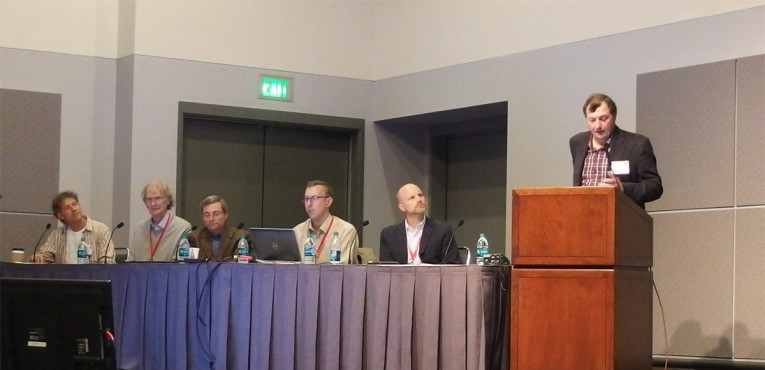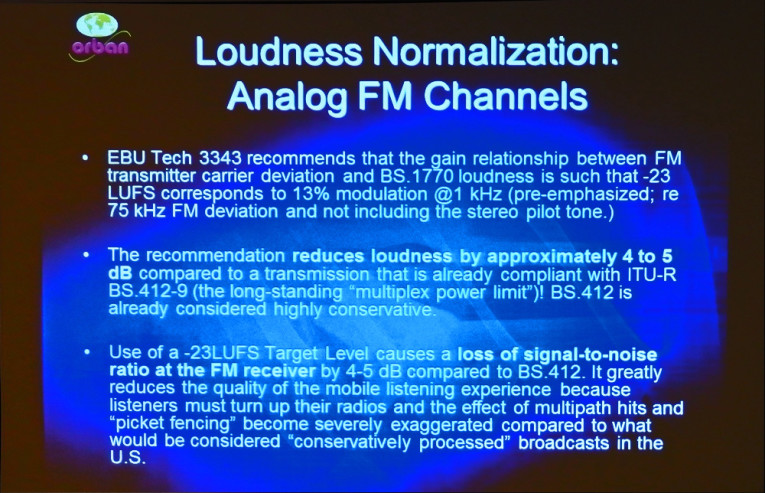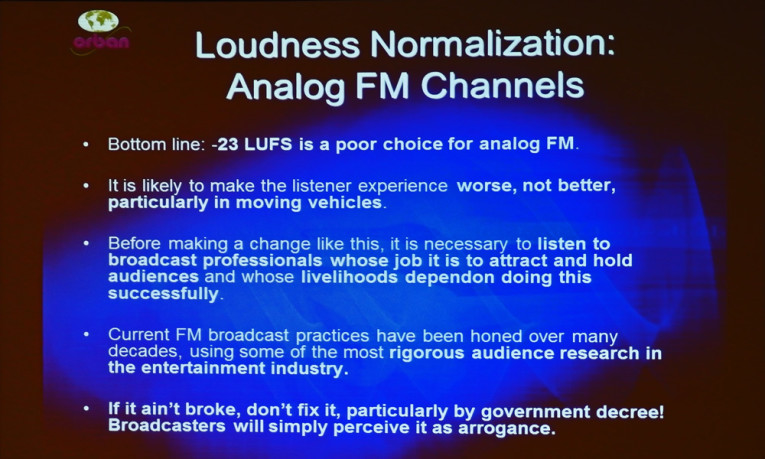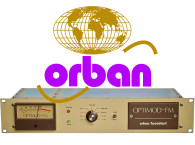
Orban and Foti are renowned experts in the area of audio processing for radio and television. Both experts made fascinating comments about applying current TV broadcast loudness standards (ITU-R BS.1770, EBU R128, etc.) to radio broadcasting and streaming services, including enforcing legislation.
Both Orban and Foti know more about multiband audio processing and the use of dynamics, automatic-gain-control circuits (AGCs), compressors, and limiters than anyone else who attended the AES session. They also know how we got to where we currently are with the “music-sausaging” phenomena, as Lund called it. The panel was supposed to discuss whether FM radio is “a lost cause” or if better audio quality could be delivered to consumers by applying the same loudness metrics now employed in TV. Both Orban and Foti dismissed the claim of the “lost cause” and clearly demonstrated why the aggressive processing was initially chosen by FM radio stations to compensate for noisy listening environments (and also because of modulation and signal reach), with people increasingly listening to radio in cars during commuting hours or in workplaces.
Such circumstances were also detailed by a recent CEA study on Loudness Range for Consumers in Various Listening Modes and Ambient Noise Levels. John Kean (NPR Labs, National Public Radio) introduced the study, which confirms how listeners react to different perceived levels according to music genres or program type in different noise environments.
Orban and Foti know all this because they designed and perfected the tools that made all the “loudness wars” possible. It was from the FM experience that music started to be mastered with increasingly aggressive uses of dynamic compression, also leading to the aggressive use of level changes in commercial breaks in television broadcasting. (Orban and Omnia processors are also standards in television transmission chains.)
Since they designed the tools and study the phenomena in depth, they also know how those tools can be used for good purposes as well as how people can easily subvert those “creative tools.” Orban and Foti also know better than anyone else how the FM processing lead to record companies and producers noticing that they could increase airplay by remastering tracks “optimized” for radio and how that fostered the whole aggressive use of “mastering” tools. The digital audio workstations, home studios, and digital file distribution did the rest.


Two interesting slides from Bob Orban’s presentation.







